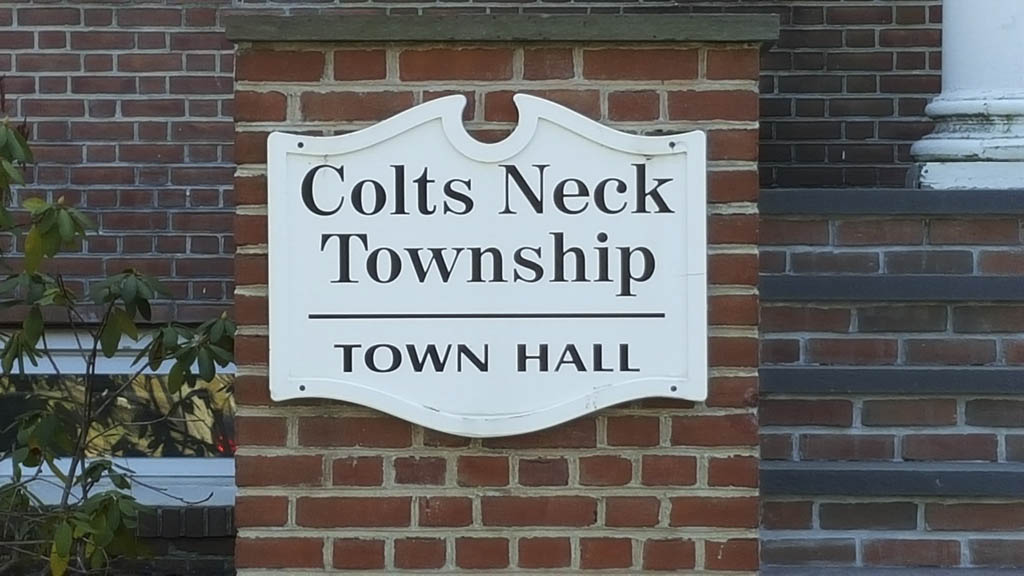COLTS NECK – The Township Committee is exploring its options in regard to dealing with an invasive species of insect called the emerald ash borer.
The invasive tree pest originated in Asia and was first found in the United States in 2002 in Michigan. Since then the emerald ash borer has spread east and has made its way to New Jersey.
The insects feed on leaves and during the reproductive cycle they leave their larvae in cracks and holes in a tree and burrow into the tree and eat the tree from the inside out.
Their larvae tunnel their way into the trees and feed on the layer of tissue under the bark. This disrupts the trees’ flow of nutrients and kills the trees within two to three years. When the trees are dead they become brittle and fall apart, creating a hazardous condition for people and property.
Michael Viola, who serves on the Colts Neck Shade Tree Commission, spoke to members of the Township Committee on July 12 and offered recommendations from the commission on how to address the emerald ash borer.
He said commission members determined that Laird field, the entrance at Bucks Mill Park and Heritage Way near the municipal complex are sites that have been deemed susceptible to the insect.
According to Viola, there are trees at Laird field that are not worth saving and will be removed. He said Bucks Mill Park will be left alone and trees will be taken down as it becomes necessary to do so. New trees will be planted as trees are removed. Viola said trees at the park have been pruned and are not a hazard at this time.
In regard to Heritage Way, Viola said there are two trees that should come down, including one near a power line that will have to be removed by a professional service.
In cases where a tree can be saved, an insecticide will be injected into the tree and the treatment will last for two years before the health of the tree is re-evaluated.
“The trees we recommend saving are iconic, they are within the arboretum and they are large trees,” Viola said.
“The arborist seems to indicate that (treating a tree) is life support,” said Committeeman Frank Rizzuto, who is the governing body’s liaison to the Shade Tree Commission. “It’s every two years and if you get it healthy and keep it healthy, you constantly have to treat it. The only way to stop this bug is if it eats itself out. It will only go away when there are no more ash trees. If we preserve these trees, they will hang around.”
Speaking about private property, Viola said, “If (a homeowner) has an ash tree on his property, it is only a matter of time before it sees the end of its life. (The homeowner) will have to have it monitored and consider having it evaluated by an arborist. If it is still healthy it can be saved, it just needs to be treated, possibly pruned and treated with an insecticide.”
At the Township Committee’s Aug. 9 meeting, Viola said the Shade Tree Commission recommends saving the trees near the municipal complex.
He said the commission received data from the midwest which showed that trees have not been infested after one treatment. The commission recommended deferring treatment until the spring.
Viola said new information indicates it may be prudent to wait until the spring to gather more data. He said that based on three estimates, treatment of the trees would range from $6,600 to $8,100. He said soil treatment is no longer recommended due to the emerald ash borer’s rise in population in other areas.
Committeeman Edward Eastman said he is in favor of treating the trees.
Rizzuto said he is leaning toward treating the trees, but agreed with the Shade Tree Commission’s decision to defer action until the spring.
“The trees are healthy now … so I think the risk of waiting until the spring is minimal,” Rizzuto said.
Committeemen J.P. Bartolomeo and Tom Orgo indicated they were in favor of cutting down the trees.
“If you are going to treat them, you are going to spend $175 per tree,” Orgo said. “I think it is a waste of money. I don’t think the trees are going to die that fast. Out west, their answer is they can’t stop it. So we are going to spend $175 per tree when it could be $200 per tree next time to treat when we could replace all the trees and plant something new for $320 per tree?”
“Would you spend $8,000 to fix your furnace or would you spend $12,000 to replace it?” Bartolomeo said. “We are not talking about trees, we are talking about somebody else’s money. I side with [Orgo]. It’s a slippery slope because they are not dead yet and we could ride this out and let nature take its course.”
Mayor Russell Macnow shared his thoughts, saying, “I drive behind the municipal complex every day. The character of the municipal complex and in extension the municipal building is these trees.
“It gives us character many other towns do not have. We go out of our way to make sure our trees are not haphazardly cut down and if we do cut them down they get replaced.
“I think the character of this complex is the trees lining … Heritage Way and Winthrop Drive. My inclination would be to do our best to preserve them. I would invest the money to try and treat them. If it turns out it would be a lost cause, I would go down the other path and remove them,” Macnow said.
The committee members decided to defer to the Shade Tree Commission and its recommendation to save the trees and to wait until the spring to make a decision about treating the trees.

